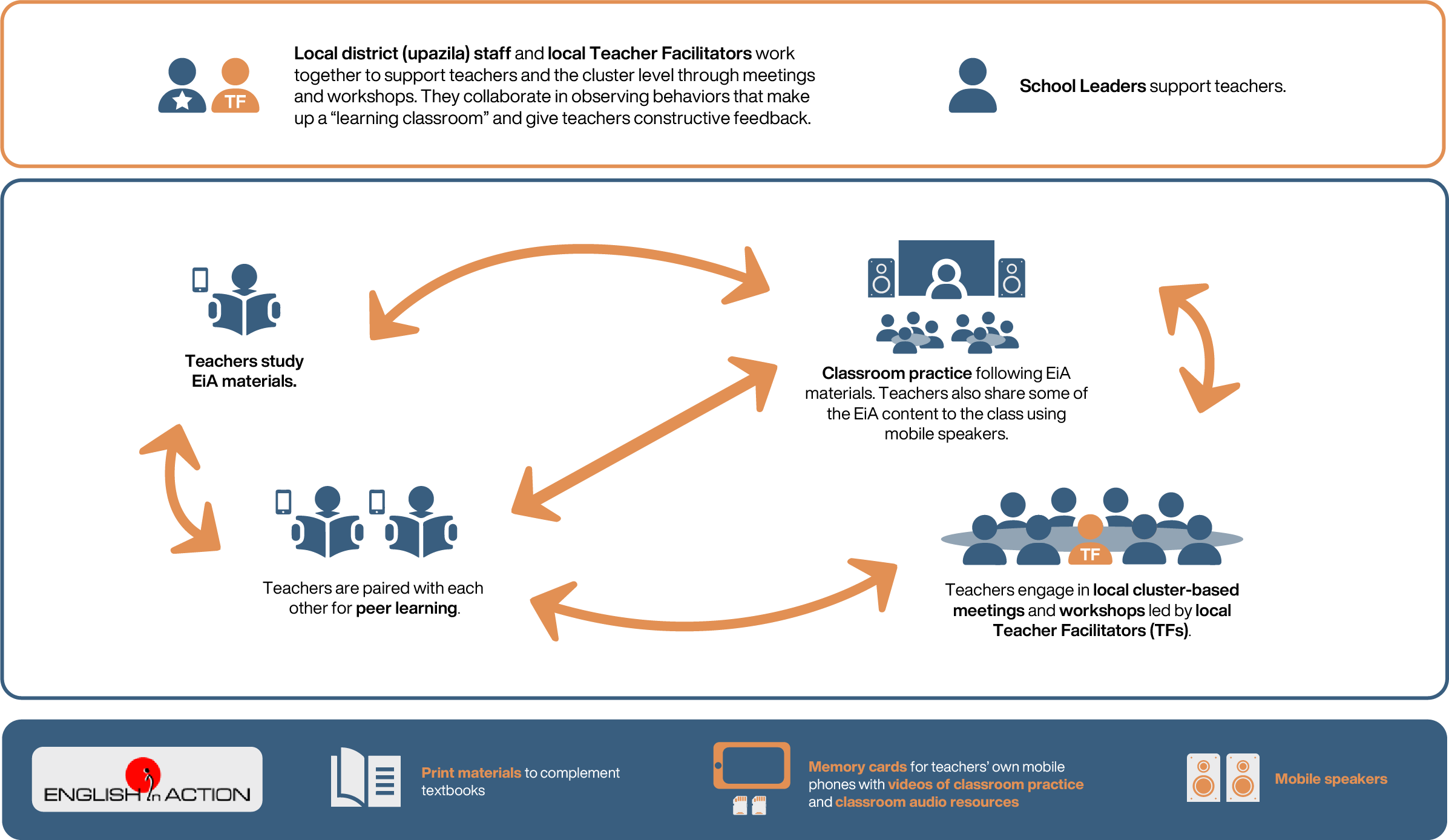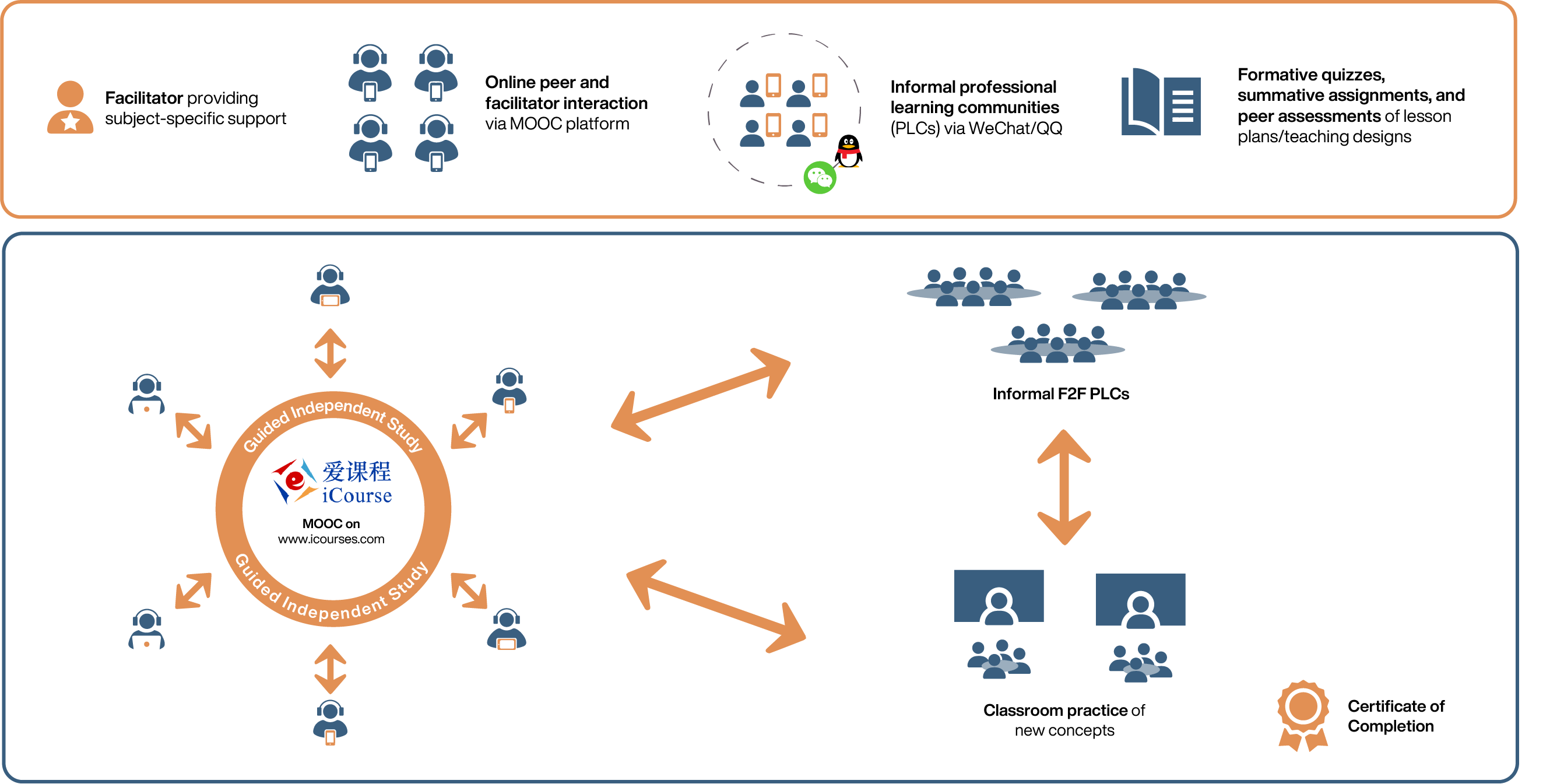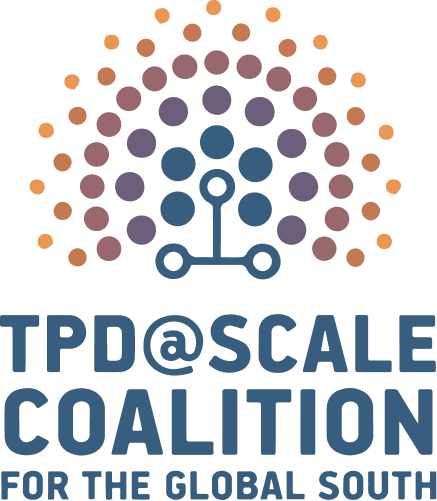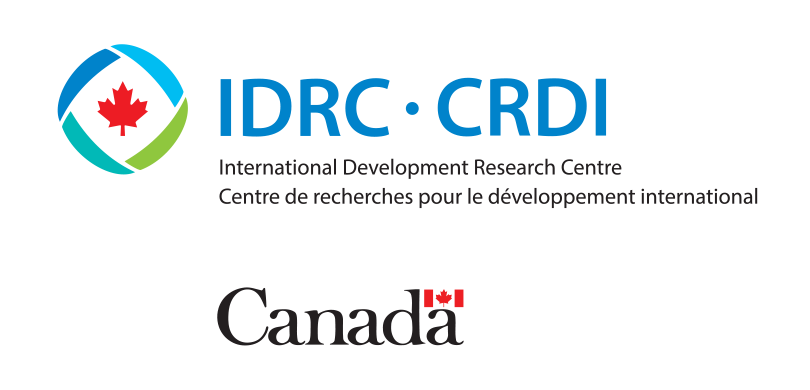Introduction
English in Action (EiA) used mobile phones, the internet, print materials, television, and peer-to-peer learning to help 25 million Bangladeshis improve their English as a route into work and out of poverty. The EiA Schools TPD program was one component of this larger project. It aimed to improve the quality of teaching and learning in English language lessons in primary and secondary schools.
Key features of the English in Action model
- Teachers are provided professional development and classroom resources in the form of print materials and videos of classroom practice on memory cards for teachers’ mobile phones. Teachers were also supplied with mobile speakers through which they could use appropriate classroom audio resources on the memory cards with their students.
- Teachers received ongoing support by being paired with another teacher in their school. They were encouraged to regularly meet, discuss the audio-visual material, plan lessons, and engage in other collaborative activities.
- Primary school head teachers took part as “full” participants in the program. Both primary and secondary school head teachers were also supported to encourage their teachers to work through the activities together in school and monitor how teachers were getting on.
- This support was supplemented by regular locally-based cluster meetings of teachers, led by local Teacher Facilitators (TFs), and by workshops; however, the core of the learning took place at the school level.
- Local district (upazila) staff and TFs working together to support teachers at the cluster level through meetings and forums was a particularly powerful exchange and cultivated a new sense of understanding and value between school and upazila-level actors.
- Strong collaboration between project staff and upazila staff improved technical capacity in observing behaviors that make up a “learning classroom” and giving teachers constructive feedback.
EiA demonstrated early impact, and the improvement of teachers’ English was sustained throughout the life of the program. Baseline studies showed that in 90% of the English lessons observed, teachers spoke from the front of the class, did so almost exclusively in Bangla, and asked closed questions; as such, students had few opportunities to participate beyond choral responses. More recent research findings showed teaching interactions were predominantly in English (over 90%) and teachers demonstrated more interactive pedagogy leading to improved student outcomes.
Central to EiA’s success was the school-based nature of learning and support through collaboration with paired teachers and head teachers. Cluster level meetings further harnessed this learning through school-to-school sharing of experiences and developed shared understanding and practical actions for how EiA’s methods could be successful in the local context.
The program had a strong "institutionalization" component and worked closely with existing government personnel such as staff from over 230 upazilas who were involved in field-level monitoring. Many of the local TFs became Master Trainers in the formal government teacher development programs. As a result of this collaboration, the role of upazila staff has been strengthened and the program has been embedded in wider national efforts to improve quality education. From 2015 onwards, the EiA multimedia English learning products and programs were transferred to national partners, who will lead future development.
EiA showed that building a strong, locally led program is key to program resilience for sustainability. Despite political volatility and security issues, especially in recent years, strong ownership at both upazila- and school-level made EiA resilient.







